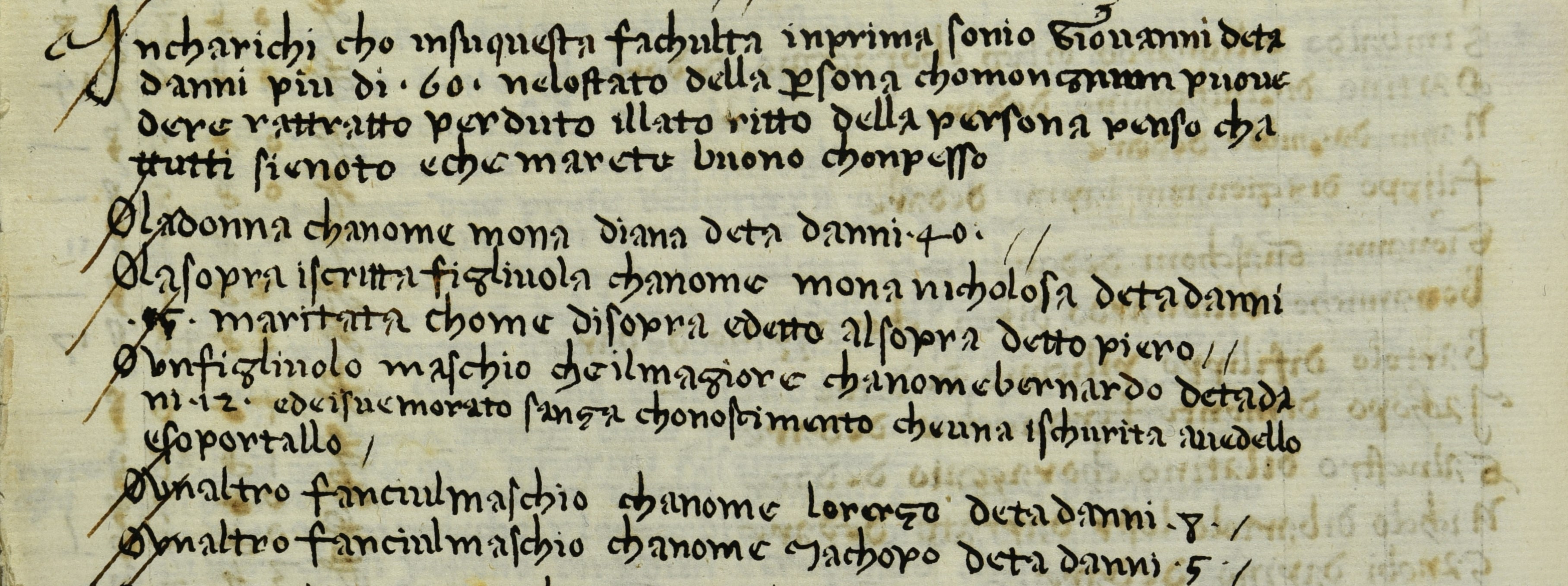PhD Top Stories
Simone Picchianti
A Forgotten Excellence: the Production of Armour in Florence
Doctoral Programme in History of societies, institutions and thought. From medieval to contemporary history
When we think of early Renaissance Florence, our thoughts turn to the spectacular development of the arts and to the names of the protagonists of this period, such as Brunelleschi, Donatello, Ghiberti or Masaccio. Today their works are for us the symbols of the city of that period, connoting themselves in the common thought as the most important characterizing elements of that historical moment. Pausing to contemplate only these magnificent works of technical skill and ingenuity, our gaze turns out to be short-sighted, according to documentary evidence, to all the other flourishing crafts that made the city an important commercial and technological innovation hub.
In those years, among the most important production activities, in addition to wool manufacturing, the silk production and leather processing, the production of armaments, especially armour, should not be forgotten. What was a knight’s armour like in early 15th century Florence? In this case, unfortunately, the written documents do not help us and to remedy this lack, it is necessary to resort to coeval pictorial sources. In this sense, several examples are offered to us by the works of Paolo Uccello (Fig. 1).

Figura 1: Paolo Uccello, 1438 circa, Battle of San Romano, Niccolò da Tolentino at the head of the Florentines army (detail), National Gallery, London.
As can be seen, the steel plates completely cover the knight’s body, except for some junction points such as the armpits; there is also an asymmetry in the shoulder protections: in order to increase the defence of the unarmed side, the left pauldron is larger than the right and a circular steel plate is fixed on it, a characteristic element of Florentine production. Who made the armour? In Florence the specialists in this field were the corazzai (cuirasses’ producers) but alongside them there were other gilds who included among their associates experts in the sector: armourers, blacksmiths and ferraiuoli (iron workers). In order to know who and how many these artisans/entrepreneurs were, different types of sources were used. First of all, the lists drawn up by the guilds in which the names of the members were marked. Further producers were identified among the volunteers of the Misericordia of Florence, a lay brotherhood founded in the 13th century with the aim of assisting the sick and taking care of the transport of the dead. Through the considerable number of documents deriving from the works for the construction of Brunelleschi’s dome, further names have been obtained. In fact, among the many expenses we find contracts for specific work tasks. Obviously, in this case, their ability to mould metal was required for purposes other than making armour: for instance, the armour producer Benedetto di Tommaso provided a metal plate «per fare uno modello per la cresta va in su la chupola» (to make a model for the crest of the dome).
One of the most important sources for the study of Florentine commercial activities of the early 15th century is undoubtedly the Catasto (cadastre). Established in 1427, this new form of tax collection required each citizen to provide the officers in charge with a declaration in which he described all the assets he owned, his debts and credits, the fixed expenses he incurred and the size of his family unit. From this information the taxation that the citizen had to pay to the state was determined. Through these testimonies it was possible to deduce, in addition to the names of the producers, also the location of their workshops and the working ties that united them. In some cases, specific information about their private life or health status also emerged. For example, the armourer Giovanni di ser Piero Centellini regretted that he could no longer create chain mail due to his health condition because he had «rattratto perduto illato ritto della persona» (numb and lost the right side of the person) (Fig. 2), probably describing that he had suffered a stroke.

Figura 2: State Archive of Florence, Catasto 1427, 61, c. 828v (detail). In addition to his age and state of health, he follows the list of his family members.
Thanks to these different types of sources, it was possible to identify the considerable number of 92 Florentine citizens who produced armour between 1370 and 1430. This data, when compared with other important arms manufacturers such as Milan and Brescia, testifies to us that Florence was if not the most important productive reality of the peninsula, certainly among the main ones, showing us how little we still know about many aspects of our history.
Authors and affiliations
Simone Picchianti1Contact
Simone Picchianti, email: simone.picchianti@phd.unitsContatto
Reference
Simone PicchiantiUn’eccellenza dimenticata: la produzione fiorentina di armature tra XIV e XV secolo
in La Ricerca IN Archivio, Atti del convegno (Archivio di Stato di Firenze, Firenze 16-25 ottobre 2019), Roma, 4503 (2021) Direzione generale degli Archivi di Stato, 2021 (in corso di stampa).
Informazioni aggiornate al: 12.10.2021 alle ore 12:02
Contact: Webmaster - Università di Trieste pagina curata da: Research Doctorate

Piazzale Europa, 1 - 34127 - Trieste, Italia -
Tel. +39 040 558 7111 - P.IVA 00211830328
C.F. 80013890324 - P.E.C. ateneo@pec.units.it


